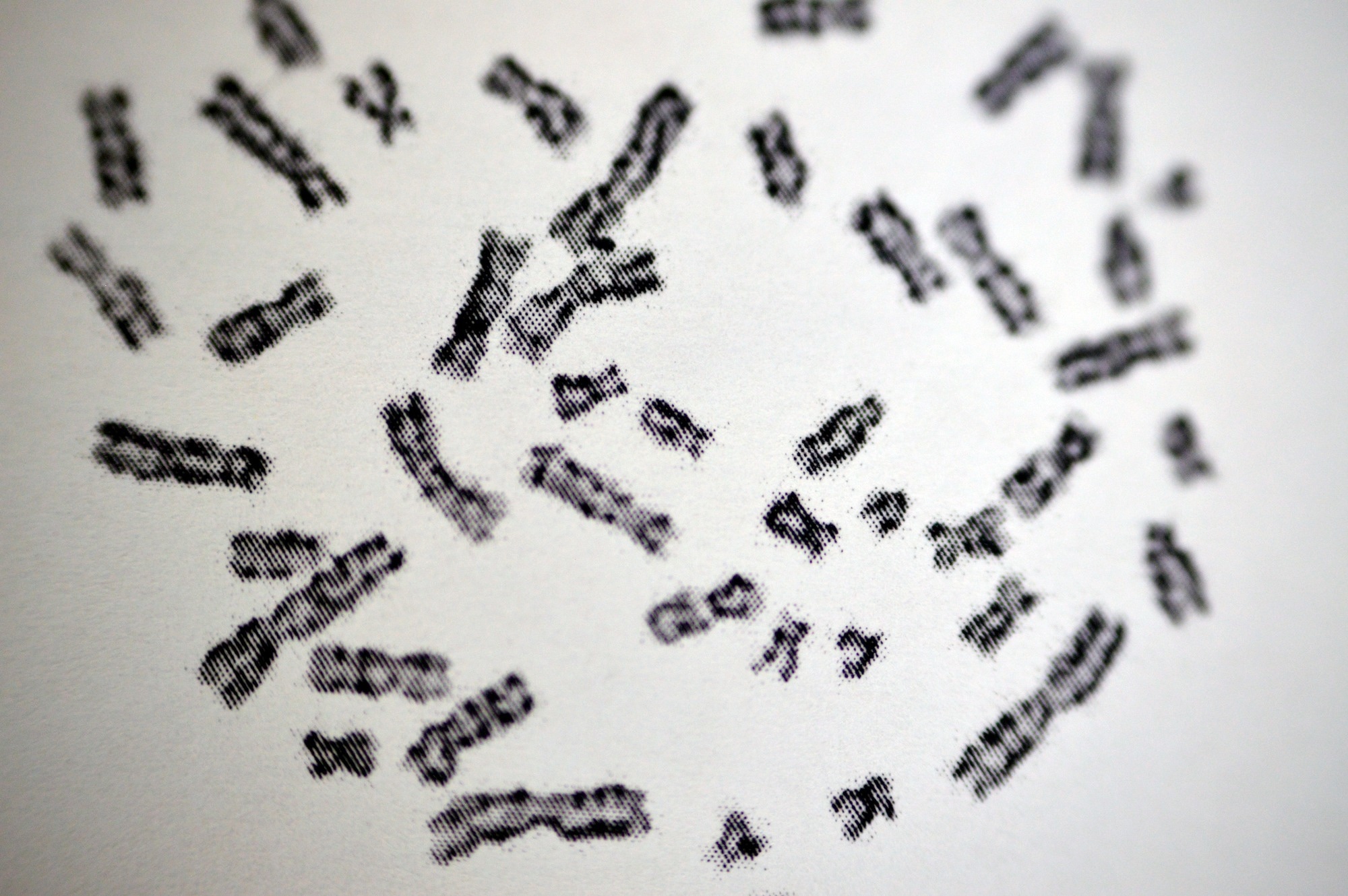Reviewed by Lauren HardakerSep 24 2025
An international team of researchers from the Francis Crick Institute, Imperial College London, Waseda University, and the Cancer Institute of the Japanese Foundation for Cancer Research has reshaped the concept of chromosome shape, discovering that they are not always stable X-shaped structures but are constantly in flux as cell division occurs.
 Image credit: Tamer A Soliman/Shutterstock.com
Image credit: Tamer A Soliman/Shutterstock.com
Every cell nucleus contains chromatin, a tangled puddle of genetic information made up of DNA and proteins. During mitosis, cells’ chromatin condenses into rod-shaped chromosomes, allowing them to divide their genetic material cleanly into two new cells.
Researchers, notably Frank Uhlmann, have attempted to explain a curious phenomenon that happens during mitosis: chromosomes begin as long threads of universal width, but then gradually shrink and thicken. His team's most recent work, published in EMBO Reports, describes a mechanism for dynamic shape modification.
The chromosome shape is determined by a protein complex called condensin, which helps fold and compact the DNA. There are debates among scientists and different models proposed as to how this happens, whether loops of DNA are actively extruded by condensin, or whether these protein complexes capture chance encounters between DNA strands.
Frank Uhlmann, Principal Group Leader, Chromosome Segregation Laboratory, Francis Crick Institute
Changing Shapes
Frank collaborated with Toru Hirota and Yoshi Kusano at the Cancer Institute of the Japanese Foundation for Cancer Research in Tokyo to scan chromosomes in the lab over time. They discovered that once the cells initiated mitosis, separate chromosomes appeared within 12 minutes, becoming shorter and thicker by the 20-minute mark.
When they interrupted the cell's division, several chromosomes continued to shorten and thicken until the recording ended after six hours.
Yasu Kakui, a former researcher in Frank’s group, joined the team to assess chromosomal arm lengths and widths at various times.
 Experimental design and time series of chromosome shape changes. Image credit: Kakui, Y., et al (2025).
Experimental design and time series of chromosome shape changes. Image credit: Kakui, Y., et al (2025).
We recorded that the shortest arms shrank rapidly in the first 30 minutes and then maintained a relatively constant shape. But the longest arms continued to shorten and thicken until the end of the experiment. This suggested that short chromosome arms reach a final state relatively quickly, before the next stage of cell division begins, but long chromosomes might not reach this steady state.
Yasutaka Kakui, Assistant Professor, Waseda University
By comparing the dimensions of the arms, the scientists determined that chromosomes strive for a ‘final roundness’ ratio, which is the most physically stable.
Frank added, “It was fascinating seeing that the chromosomes were in constant flux. They continued to get shorter and thicker, suggesting that there’s a steady state they’re aiming to reach.”
Capturing DNA to Achieve a Steady State
To understand Yasu’s findings, the researchers collaborated with physicist Bhavin Khatri, a visiting scientist at the Crick and research fellow at Imperial College London, and Imperial undergraduate student Maya Lopez to create computer models of shape changes.
These relatively simple simulations captured what the team had seen in the lab. Longer chains take far longer to reach a stable length, suggesting they aren’t in a steady state at cell division, whereas shorter chains reached a steady state almost straight away.
Bhavin Khatri, Visiting Scientist, Francis Crick Institute
The simulations confirmed the hypothesis that the loop capture mechanism explains how condensin creates chromosomes. Modeling the random capture of DNA strands produced structures similar to those found in the lab, indicating that this is how condensin helps chromosomes achieve a stable state.
Chromosome shape changes
Video credit: The Francis Crick Institute/Youtube.com
A State That’s Unachievable for Most
According to Frank, the findings of these interdisciplinary studies provide a new perspective on chromosomes.
“They are so much more dynamic than the textbook X-shape suggests. We’ve shown that the length of time chromosomes spend in mitosis dictates whether they will all reach a final shape or not, and that capturing DNA strands by chance aids in this process. It is interesting to think that the majority of chromosomes will keep trying to reach this final oval shape, but will never get there,” Frank concluded.
Source:
Journal reference:
Kakui, Y. et al. (2025) Progressive chromosome shape changes during cell divisions. EMBO Reports. doi.org/10.1038/s44319-025-00577-4.